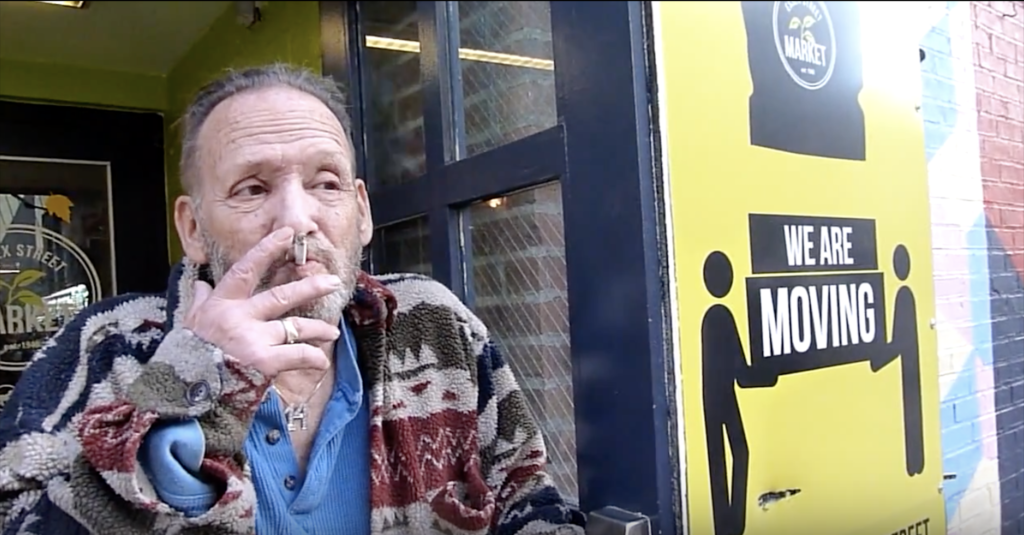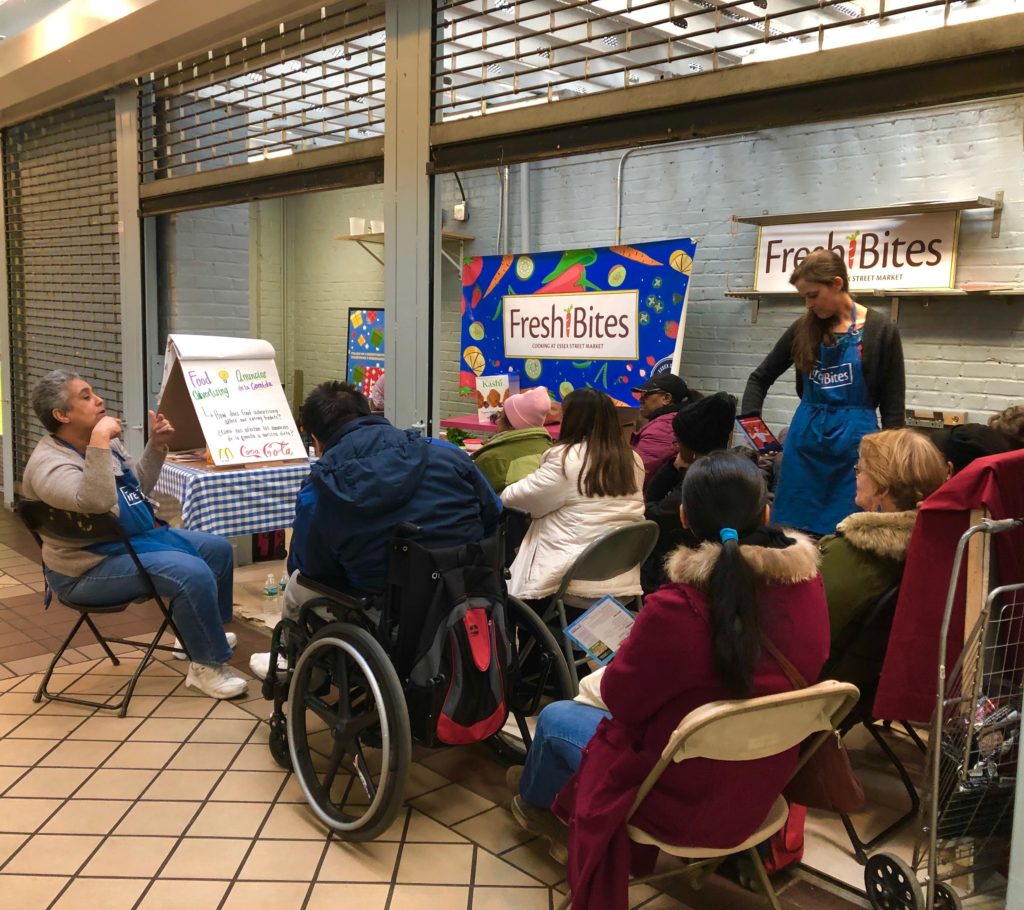
Every vendor at the Essex Street Market is moving across the street in April to the market’s new home, Essex Crossing—except for Ira Stolzenburg, the oldest surviving vendor and owner of Rainbo’s Fish, who will retire. It was a difficult decision: as recently as November, he was still deciding to stay or to go. He leaned against the windowless exterior of the current market to have a smoke and pointed across the street. “Do I expect it’s gonna be any better?,” he said. “I don’t see why it should be. Maybe at the beginning because it will be something new and people will be interested in it. I’m going to give it a year, and after a year, if it doesn’t improve, I’m just going to get out of New York, I mean, I’m 70 years old.”
The Essex Street Market is one of 25 indoor markets created by Mayor Fiorello Laguardia in the early 1940s as part of a campaign to ease street congestion. There are now only five left. The New York City Economic Development Corporation owns these markets and subsidizes the vendors’ rents, enabling them to sell groceries at an affordable price—but Ira said business has suffered since the late 90s because of an influx of new supermarkets, as well as its windowless design, which isolates the market from the street.
The new market is part of a large development that includes luxury stores, offices and condos, part of a gentrification process that has seen a 50 percent increase in rents between 1990 and 2014. Ben Baccash, a vice president of Taconic Investment Partners, the developer for the new complex, said it was designed carefully to benefit everyone in the neighborhood, consisting of 50 percent affordable housing, public gardens, and affordable stores like Target. “Contrary to popular belief, a lot of developers want to enhance their communities. The old market building was worn, and unmaintained. We are just moving it across the street to a well-equipped, sustainable space that will increase foot traffic for the vendors.”
Most of the vendors look forward to working in the new space, which provides better surroundings at the existing rent. Manny Diez, owner of Dominican Cravings, an empanada joint, is excited. “I’m happy to be moving to the new space, because I will have new equipment and my rent will not increase. Also, the introduction of new vendors will increase foot traffic.”
Customers who relied on the old market say that they will go to the new market as long as the prices stay the same. Essex Street Market is not only affordable, but offers fresh produce specific to certain types of ethnic cooking. Graciela Estpupz, a 40-year-old Dominican woman who moved to the area in the early 90s, relies heavily on the market. “I get everything here from soap, to avocados for guacamole, to plantains, to Dominican salchichón,” she said, referring to the Spanish smoked summer sausage—a Dominican staple. “I will continue to go to the new market because it’s the only thing we have. But if they raise the prices, that’s another story.”
Lauren Margolis, of the Lower East Side Partnership, a non-profit partner of New York City Economic Development Corporation, runs programs that educate members from ethnic communities in the neighborhood on how to shop and make meals on tight budgets, which will continue in a state-of-the-art demonstration kitchen in the new market. They have been working with the Essex Street Market Vendor Association for three years, aiding the struggling public facility to boost foot traffic and reverse the false perception that the old market is closed. Her classes are popular with the local community, and offer translations in English, Spanish and Chinese.

Sarah Lohman, a historic gastronomist and one-time educator at the Tenement Museum, says that the market’s link to immigrant communities is essential, even as the neighborhood changes. “The reason these markets have survived is because they started in predominantly immigrant neighborhoods, and these are still immigrant neighborhoods,” she said. “So even though where people come from has changed, they still have the same needs. One of the things that makes the Lower East Side different is that it is a mix of affordable housing, high end condos and everything in between. And that government housing is not going away. So if you do want to serve the community, you have to serve everybody because the whole spectrum of economic levels and backgrounds are here in these 40 to 80 blocks.”
Still, some are sad to see the old buildings go. “Local residents lost a battle to save the original market buildings, two of which have already been demolished,” notes Richard Pieper, a historic preservationist and inhabitant of the area since 1980. “This demolition and massive new development will change the neighborhood dramatically.”
Stolzenburg ran Rainbo fish for over 45 years with his husband Ronnie, who died three years ago of cancer. “This used to be a really great market,” he said. “It was so busy. We made so much money, it was crazy. We were big spenders, and had everything we could ever imagine. But the market kept changing managers, did not market itself, and never updated the building. Now the market is so crummy. Look at it. It’s dead!” Ira just sold his condo, located in a quiet College Point neighborhood and plans on moving to New Jersey or Fort Lauderdale. “Everyone is going but me. Of course I’m hoping it does well. I just think there are too many new stores now. No one can predict whether it will busier over there or not, but I can’t personally see the new market doing any better.”
Tags: Essex Crossing, Essex Street Market, immigration, Lower East Side, market
Your Comments